Welcome to February Tree Following hosted by Lucy at Loose and Leafy where trees are followed by curious gardeners. This is my fourth month to follow my tree-of-choice, the Retama, Parkinsonia aculeata.
On a clear day, if I turn my head at the right angle, I fantasize that it’s spring or summer and all is green and leafy in my corner of the world.
Though it’s been a mild winter here in Austin, Texas, it’s still winter–gloom, wet, not green, not lush. However, the Retama is still attractive and always interesting.
All the tiny leaflets dropped from the tree, though (as evidenced in the photo above) there are still some stalks left. Not many, but a few, like bristles at the end of brushes, remain at the top of the tree.
Had there been a deeper freeze, those would be kaput, too. There are some on the ground,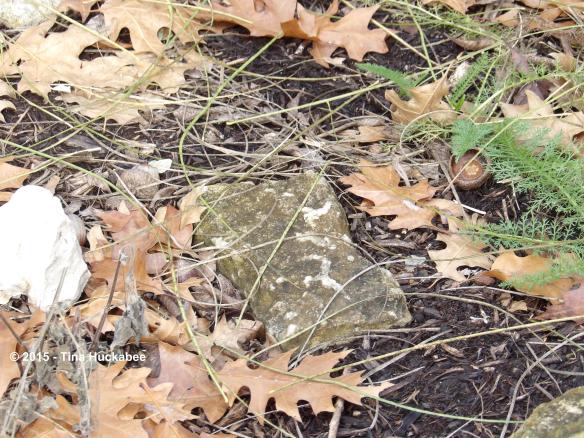
…along with other un-raked leaves.
Yes, I am behind in my gardening chores.
The Retama is a lovely tree in winter.
The beautiful smooth bark remains green in winter and during severe drought to photosynthesize for the tree.
Retama is native to Texas and Mexico, but is an introduced species in many places of the world. There are traditional communities that have learned the value of Retama in treatments of various ailments, like those in the Brazilian study I wrote about in December’s Tree Following post. The Brazilian study confirmed the anti-diabetic properties of Retama, which had been understood by residents for many years. Approximately one-fourth of the world’s population (about 1.42 billion human beings) relies on traditional medicines, rather than synthetic ones. In India, where Retama is an introduced species, scientists have also studied the Retama for its medicinal uses. In an article published in 2010 in the International Journal of Pharma Sciences and Research, that gorgeous evergreen bark of Retama was studied as a basis for “pharmacognostical standards.” (Don’t fret, I had to look up the meaning of that word: it’s a study in pharmacology dealing with the components of medicinal compounds derived from plants.) The scientists studied for taste and color, as well as exposure to various chemicals and concluded that P. aculeata, aka, Retama, possesses compounds that are generally valuable against degenerative diseases.
In another study, published in 2011 in Asian Journal of Plant Sciences, Indian scientists studied the various parts of the Retama tree which have been used in traditional remedies. The leaf possesses antibacterial, anti-diabetic, and anti-malarial properties and treats rheumatism; the flowers as well also treat rheumatism. The stem and fruits (seeds) of the Retama treat fevers and malaria. Additionally, rat studies indicated that parts of the Retama showed evidence of contraceptive qualities and pregnant women are advised not to ingest stem, leaves and flowers, as spontaneous miscarriage may occur.
This particular article also mentioned that separate studies suggest that the roots of Retama may resist certain heavy metal soil pollution, thus it may be a good plant to grow in polluted soils.
It’d be nice to simply not pollute soils.
The more I learn about my Retama, the more impressed I am at this great little tree. I thought it was just another pretty face, but it has so many talents.
And, there’s more Retama where that came from: I found a seedling this past month,
…which will be dug up and gifted to a neighbor this weekend.
Many thanks to Lucy and check out Loose and Leafy for more tree trivia.
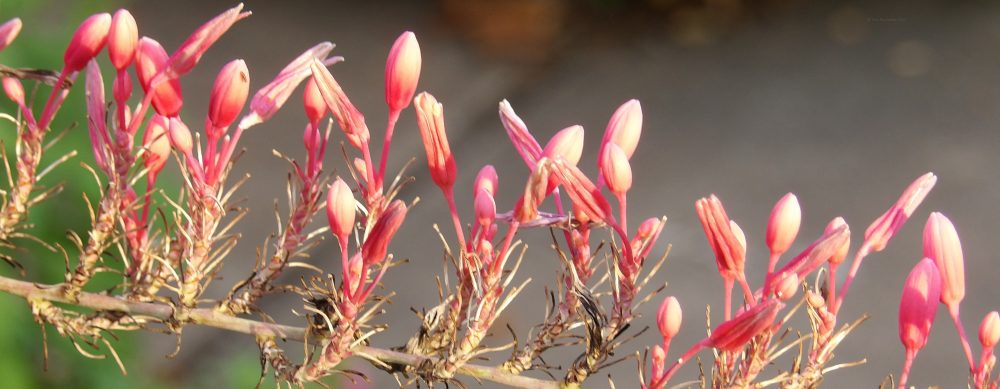

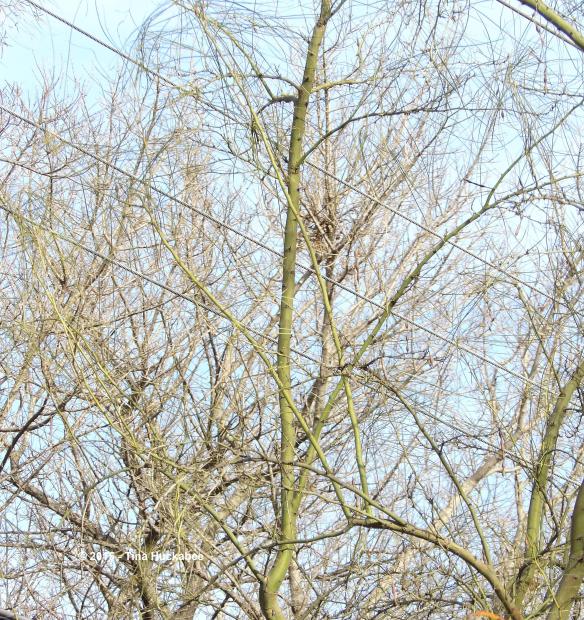




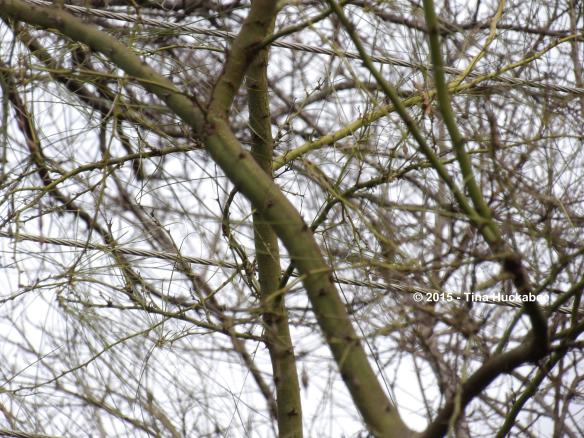
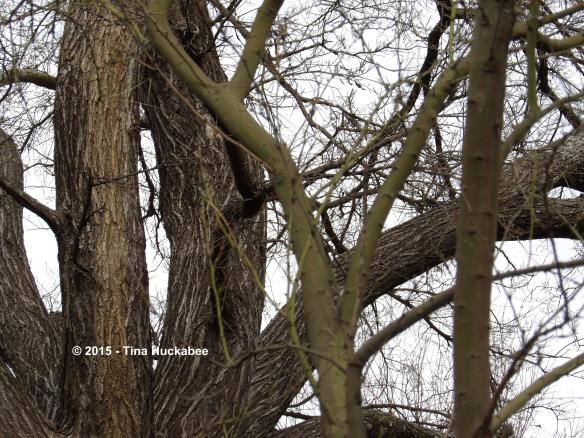



What an interesting tree. The thin stems make me think of willows.
LikeLike
Retama is interesting and I agree, it shares that delicate quality that willow also has.
LikeLike
This is a really interesting post Tina, I really enjoyed it and the link to the Wildflower centre was good too. Looking forward to hearing more.
LikeLike
Thanks, Julie! It’s been a treat to learn more about this tree–it’s quite fascinating. I always link to the Wildflower Center when I write about North American native plants–it’s a valuable resource. If you’re ever in Austin, it’s a must-visit stop. It’s a beautiful set of gardens, interesting architecture and an important resource as a research institution and demonstration site.
LikeLiked by 1 person
I am especially smitten with that last photo – the forms! Really top notch. But what grabbed me the most in this post wasn’t really even directly about your tree, it was this statement:
“It’d be nice to simply not pollute soils.”
Well said, tree sister! So let it be written so let it be done.
LikeLike
I like that last photo too. It’s been quite challenging for me to photograph that tree–with all those nasty, but necessary, utility lines above it–those are hard to ignore and work around.
Wouldn’t it be nice if corporations and people would take better care of their surroundings– I despair at our shortsightedness.
LikeLike
I just love your retama portraits. The yellows and greens of the first photo and the graceful lines of the last (and everything in between). The line about not polluting in the first place also made me just stop and think. So much can be said in only one sentence.
Just this morning I noticed that a lemon tree has been quietly growing behind the compost bin. It is surprisingly tall. I’ll have to move it because that is an area of PURE shade. But. Isn’t it so wonderful when something just decides to grow out of its own volition?
LikeLike
It is wonderful when botanical serendipity presents itself–go forth, little lemon tree (after transplant) and produce!
The retama is very photogenic….
LikeLiked by 1 person
If I ever live in an appropriate climate, I will try to remember this tree. It’s one I would enjoy incorporating into a garden. So much to appreciate–its beauty, its ecological value, its medicinal worth, and so on. Great tree to follow!
LikeLike
Thanks for more on your tree! I enjoyed the information. Perhaps one day, instead of swallowing a pill for what ails us, we’ll just have to eat a Retama leaf. Or drink some Retama tea!
LikeLike
You’re very welcome–I enjoy learning about this tree. It does seem to have lots of curative properties, doesn’t it?
LikeLike
Tina this is why I love this meme….as you learn we learn. This is an amazing tree in appearance and use.
LikeLike
I agree–I love the meme too! I always appreciated the retama for its beauty and as an excellent wildlife plant, but had no idea of its many uses otherwise, and probably wouldn’t have if it wasn’t for the meme.
LikeLike
I’m impressed with how richly green the trunks and stems are. Our young aspen sometimes have green bark … or so we say. It doesn’t even come close to the retama!
LikeLike
It’s green, really green. When the late afternoon winter sun shines, it positively glows.
LikeLike
Wow, it sounds like some sort of miracle tree with so many health- giving properties. We all need a Retama tree. And until you decided to follow one I had never even heard of it.
LikeLike
It’s an amazing tree–I had no idea that there were so many medicinal uses for it and that it was studied by scientist around the world. Oh yeah, it’s pretty too. 🙂
LikeLike
I have to own up to liking power lines – and how I think they look elegant as they cross your tree ;in the photo they do even if not in real life. I wonder what will arise from the studies about its medicinal values – whether the pharmaceutical companies will get round to turning them into medicines for people who don’t happen to live by such a tree.
LikeLike
That’s funny–I should really take your attitude about the gracefulness of the lines. I just can’t get past the notion that power lines are a necessary eyesore.
No doubt, some American mega-pharmaceutical company already has its digs in the retama-as-medicine scheme. That’s okay, of course, as long as the meds aren’t out of the pricing of those who need them. I’ve been fascinated by this tree–I had no idea, so thank you for the opportunity to learn more through your delightful Tree Following meme.
LikeLike
How wonderful to have found a baby that you can share 🙂
LikeLike
It’s a great little tree!
LikeLike
How interesting! I like it when a plant has some other properties, except being beautiful 😉
Indeed that many people on this planet are still relying only the medicinal qualities of plants, and sometimes I think that maybe they do better than us…
LikeLike
Me too! I think you’re probably right–I do like the idea that the plants (and I’m sure others) were already utilized by “regular folk” and then scientists took notice.
LikeLike
Pingback: A Seasonal Look: Retama (Parkinsonia aculeata) | My Gardener Says…